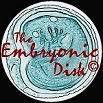|
|
Structure and content
: 1
Subject coverage and core material
The
resource focuses initially on the crucial first 28 days of development,
when the embryo takes shape and its major organ systems become
laid out, and on key events in the following weeks that affect
more than one body system.
This focus is designed to support foundation studies in integrated
medical curricula.
Introduction
to 'The Embryonic Disk': a primer on
the uses of embryology, its terminology, and navigating around
the resource.
Egg
to embryo: a beginner's guide to the
formation of the human embryo from fertilization to folding, in
30 images and about 1,000 words.
Timetable for weeks 1-4: the first month of life laid out
on a single page, with each day hotlinked to an illustrated core
description and narrative of its main events.
Schematic for weeks 5-38: later stages of development organized
by body system, with key multi-system events shown spanning the
relevant individual systems.
Other core sections describe the normal and anomalous development
of all the major thoracic and abdominal organ systems, the nervous
system, and the head and neck.
Development
by region and system:
the development of individual regions and organ systems, including
the head and neck, nervous system and special senses, cardiovascular
system, digestive system, excretory system and reproductive system.
Events with a still
wider time-span, such as
the germ line, gametogenesis and fertility, the placenta, and
the development of the structures of speech and hearing, are covered
in a series of topic overviews.
The germ
line:
an illustrated account of the cell line that carries our genes
from fertilization, throughout development, to the next generation;
includes the ovarian cycle and spermatogenesis.
The placenta and membranes: their development, structure,
function and common abnormalities.
Twins and more: the varied embryological bases of non-identical,
identical and conjoined twins, illustrated with diagrams and photographs.
Parts of speech: the embryology of speech and hearing,
aimed explicitly at students of speech and language but relevant
to all student groups.
There is also
a special section on preimplantation genetic diagnosis, illustrating
powerful new techniques for combining genetic diagnosis with in
vitro fertilization.
|
